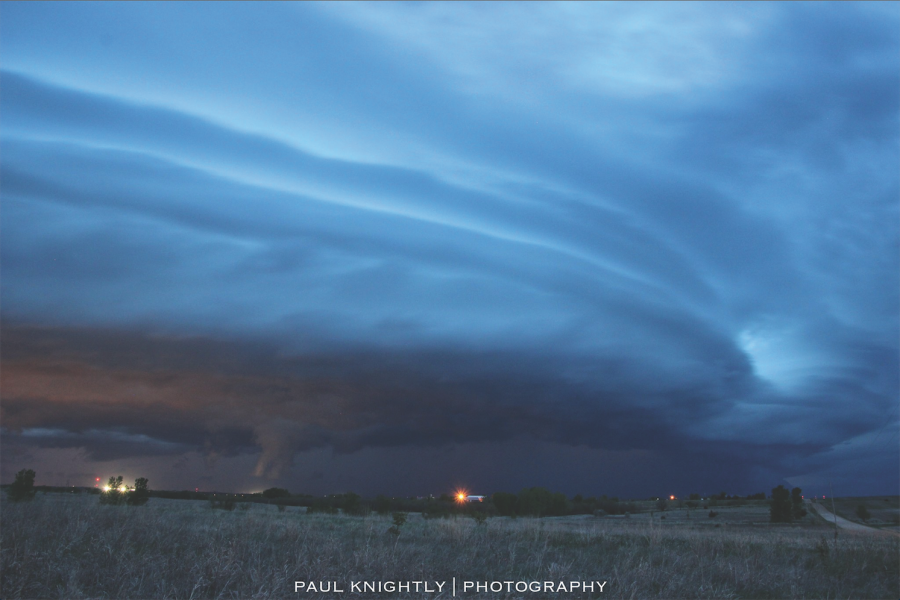As storm season approaches, preparation matters
April 29, 2015
The months of May and June are typically when the most severe weather occurs in Kansas, so knowing what to do when wind starts sweeping down the plains is critical.
“Severe weather season can be a scary time of year,” said Paul Knightly, a certified storm spotter. He follows severe storms to photograph them and uses social media to help keep people, as well as the National Weather Service, aware of what is happening on the ground.
Knightly said the best advice for people not from the region is to read up on what weather phenomenon affects their area and to understand the relative risks and safety measures that they should take if they are in danger.
“Most severe weather precautions revolve around getting inside a sturdy structure and keeping away from windows,” Knightly said.
Knightly urges that people take the threat of storms seriously. He said there have been a number of events where people lash out at meteorologists for not getting a forecast exactly correct.
“A lot of variables can affect whether or not a severe weather event happens,” Knightly said. “While enormous strides have been made in forecasting, there are still a lot of unknowns.”
Knightly said that when the weather service calls for a severe weather outbreak in the area, pay attention regardless of the previously forecasted event’s outcome
“Staying weather aware is your responsibility, and it could someday save your life,” Knightly said.
According to the National Weather Service, a thunderstorm is considered severe if it produces hail at least one inch in diameter or has wind gusts of at least 58 miles per hour. These thunderstorms can produce heavy rain, which causes flash flooding. While wind and hail can be extremely dangerous and damaging, more deaths are caused each year by flooding and lightning.
The NWS advises people to head inside if they hear thunder or see lightning, since they are close enough to be in danger. Lightning strikes about 25 million times a year, and kills an average of 51 people in the United States.
Additionally, flash flooding can quickly cause rivers to overrun and cause street flooding. NWS advises to never walk or drive into a flooded roadway.
If you are driving, and severe weather strikes, NWS advises that you safely leave the roadway, park and stay in the vehicle. If you are outside and are unable to reach a safe building, avoid high ground, water, isolated tall trees and metal objects. Structures such as picnic shelters, dugouts and sheds are not safe.
Tornadoes can occur anytime, anywhere, but most develop in the Central Plains and southeast United States. Tornadoes have been reported in all 50 states.
Knightly said some of the biggest persistent weather myths are that geography or geographic features keep storms from affecting an area, causing some people to become complacent when weather is threatening their area.
“Just because storms seem to always avoid your town or weaken before reaching it doesn’t mean that they will always do so,” Knightly said. “Even if you think you’re safe, make sure that you are. If there is a warning, take appropriate measures and seek shelter.”
It is important to note that there is a difference between a weather watch and a weather warning. When a weather watch is issued, it means conditions make it possible for severe weather to generate over the next several hours. A warning is issued when a storm is present and impacting a specific area. If a warning is issued, an area can expect to be impacted within 30 minutes to an hour.
Knightly said storm chasing has become more popular in recent years, especially in light of hit TV shows that glorify storm chasing and the advent of mobile Internet access that puts Doppler radar in the hands of anyone with a phone.
“The reality is that it can be a potentially very dangerous hobby and those interested in taking it up should do their homework first before jumping in,” Knightly said.
Knightly advises those interested in storm chasing to go with someone who is more experienced, or to go on a storm chasing tour. He said it is important that a chaser understand the variables that can affect a storms course and intensity and be able to identify those factors while in the field.
“In that sense, it is not enough to just know what a Doppler radar is saying, but to recognize changing environmental conditions that can alert you to potentially dangerous scenarios before radar even picks it up,” Knightly said.
Knightly posts his weather images on Instagram at instagram.com/paulknightly.



